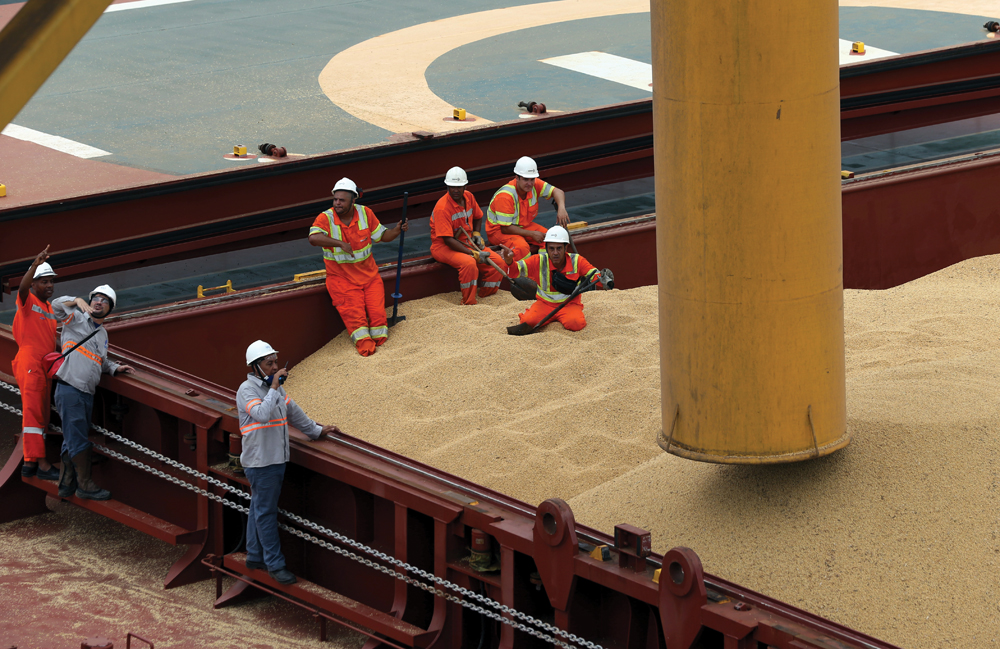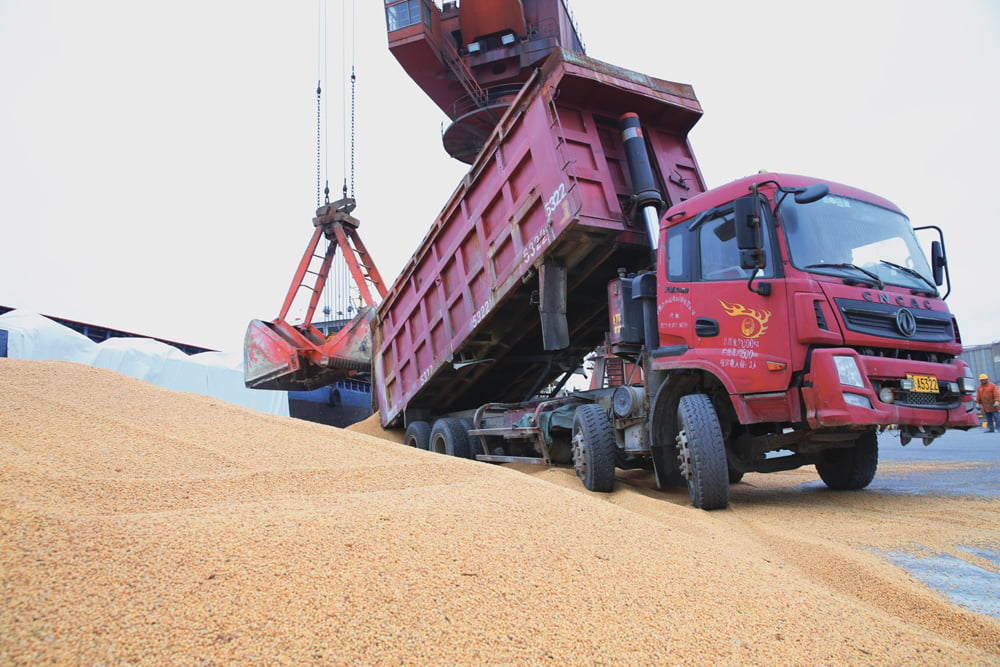Brazil has harvested two enormous soybean crops in a row and will likely make it a third straight in 2019, but the volume might not be as big as market participants were initially expecting and this could be of particular concern for the top customer.
Brazil has helped pad supplies in No. 1 buyer, China, ever since the East Asian country became locked in a trade dispute with the United States, causing Beijing to tariff the U.S. product. Abundant Brazilian supply has allowed China to hold off longer on buying U.S. beans, and with Brazil’s harvest in the early stages, China’s wait should soon be over.
Read Also

When farmers vote against their interests
U.S president Donald Trump has left many clues over the years that many of his actions weren’t going to necessarily be in the best interests of American farmers.
However, this year’s harvest may not be going as swimmingly as once thought. Precipitation deficits have crept into top-producing states, and some traders have cut back on their harvest estimates.
In a Reuters poll conducted between Jan. 3 and Jan. 7, industry analysts on average pegged Brazil’s 2018-19 soybean harvest at about 120 million tonnes.
Last month, the U.S. Department of Agriculture raised the crop to a record 122 million tonnes while official Brazilian statistics body Conab pencilled in 120.1 million.
Some market estimates are lower now. Last week, consultancy INTL FCStone reduced its target by about four million tonnes to 116.24 million and grain growers’ group Aprosoja pegged the soy crop between 110 million and 115 million.
It is worth pointing out that one year ago, estimates for Brazil’s soy harvest were much lower than the final tally of around 120 million. Both USDA and Conab were at 110 million tonnes, though some groups were as high as 114 million.
Despite the markets’ recent tendency to lowball Brazilian soybean production, there are some very good reasons to question whether the 2019 harvest can break last year’s record, even though it seemed like a sure thing just a month ago.
Soybeans in No. 2 soybean- and corn-producing state Paraná in Brazil’s south have recently taken a notable turn for the worse.
As of January 7, some 58 per cent of the crop was in good condition compared with 80 per cent on Dec. 17. During the week of January 7 in the past three years, at least 87 per cent of the state’s soybeans were rated in good condition.
This includes the 2016 harvest, when Paraná’s soybean yields fell eight per cent below trend due to persistent dryness. Yields reached 10 per cent above the long-term trend in 2017 and three per cent above last year.
Rainfall has been too scarce in recent weeks. Accumulated precipitation over the past two months stands at just two-thirds of normal levels. The state’s soybean planting wrapped up in late November.
One partial explanation for the decline in conditions is that 17 per cent of the crop had reached maturity by Monday compared with three per cent three weeks earlier, and mature soybeans may not appear to be in “good” condition.
But the 22-point drop in the “good” category over the last three weeks more than accounts for this factor. Additionally, some 12 per cent of the crop is now in bad shape versus just three per cent on Dec. 17.
Harvest is already off to what is probably a record-fast start. Some five per cent of soybeans had been cut in Paraná by January 7, and this mark is usually not reached until about Jan. 23.
Fast is not always best, though. Paraná’s soy harvest moved very slowly in the past two years with excellent results. The 2016 harvest got off to a super-speedy start but fell off in the second half and had disappointing yields.
Below-normal rainfall has also been prominent recently in top grower Mato Grosso in Brazil’s Center-West. The key northern production region of the state has received only 80 per cent of normal precipitation over the last 60 days.
But much of that dryness occurred in the last four weeks or so, potentially after the critical pod-filling period. Mato Grosso farmers planted the soybean crop at a record-fast pace, completing most of it by early November. It is also noteworthy that soil moisture was at a five-year high for the time of year.
It is uncertain to what degree yields have been impacted in Mato Grosso, but since that state is first to be harvested, evidence will arrive sooner rather than later.
Mato Grosso do Sul, south of Mato Grosso and north of Paraná, has observed 69 per cent of normal rainfall in the last 60 days, and crop losses are already being considered there. Mato Grosso do Sul produced eight per cent of Brazil’s soybeans last year.
The next two weeks are likely to be drier than normal in Brazil’s top producing states.
Some analysts already fear that the recent dryness could negatively impact Brazil’s second corn crop, which is planted immediately following soybean harvest and is most heavily exported.
Generally, the second crop, known as safrinha, is at much higher risk weather-wise than soybeans or full-season corn because an early onset of Brazil’s dry season often coincides with grain fill. An early soy harvest and an early start to safrinha planting usually provide a good buffer to combat this issue.
It is too early to know for sure whether Brazil’s dry season, which typically begins in June, will come early this year. However, there is evidence that when the Pacific Ocean is in a warm El Niño cycle as it is now, safrinha corn often endures a drier season.
For now, analysts believe Brazil’s corn crop will be much better than a year ago, which was plagued by late-season dryness. The average trade guess is between 93.3 million and 94.3 million tonnes versus 81 million and 82 million last year.
Conab sees the 2018-19 corn crop at 91.1 million tonnes. This includes second corn improving by nearly 10 million tonnes over a year ago to 63.7 million. USDA holds a more optimistic view on total corn production of 94.5 million.















